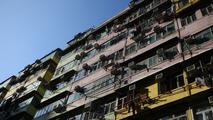
This photo dated Nov 27, 2020 shows an old building in Mong Kok, Hong Kong. (CALVIN NG / CHINA DAILY)
HONG KONG – Hong Kong’s deadliest fire in nearly a decade has set alarm bells ringing in a city that has a high concentration of old buildings vulnerable to blazes.

A child was among eight people who lost their lives in the Nov 15 fire in Yau Ma Tei that broke out at an unlicensed restaurant operating inside a nearly 70-year-old, four-storey residential building. In 2011, nine were killed in a fire that engulfed two old buildings, both over half a century old, at neighboring Mong Kok district. It was later classified as an accident.
In Hong Kong, the most vulnerable structures are the “three-nil buildings” where residents have not formed an owners’ corporation or a residents’ organization, and have not engaged any property management company to oversee general maintenance. Many flats in such buildings have been sub-divided to accommodate multiple occupants, amplifying fire risks.
The Home Affairs Department confirmed with China Daily that there are about 5,000 such buildings scattered across the city, with most concentrated in Central and Western, Yau Tsim Mong and Kowloon City districts.
According to the city’s Buildings Department (BD), the Yau Ma Tei building is one of around 13,500 premises across the city subject to the Fire Safety (Buildings) Ordinance that came into effect in 2007. The ordinance stipulates that buildings constructed or designed before March 1, 1987, must be suitably equipped to meet modern fire protection requirements.
Chow Wan-ki, emeritus professor of Architectural Science and Fire Engineering at the Hong Kong Polytechnic University, said while a major tightening of fire safety measures had been carried out in the city in 1987, it was relatively easy for non-residential buildings to comply. For residential buildings, he said, compliance was a challenge.
ALSO READ: 8-yr-old boy among 7 dead as HK sees deadliest fire in 9 yrs
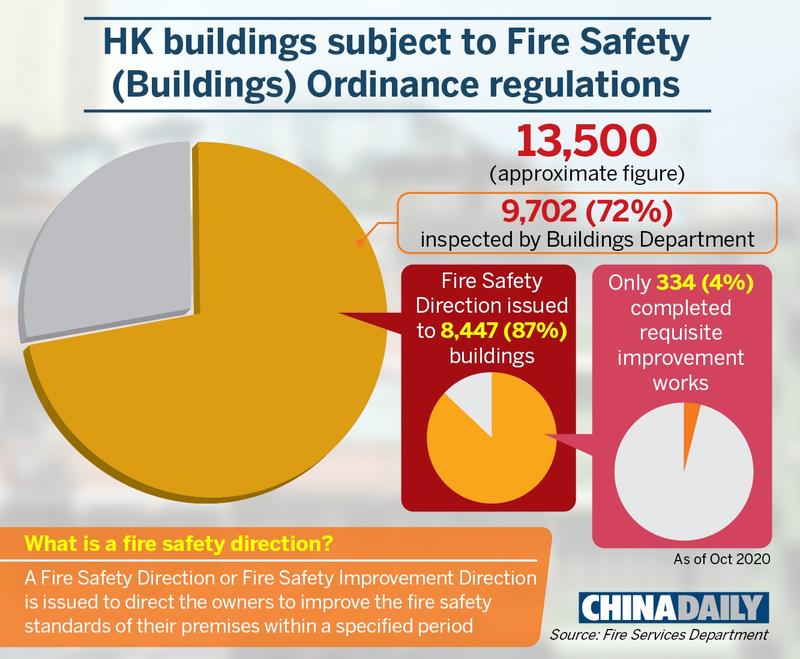
It usually takes a very long time to inspect, redesign and upgrade even commercial buildings, said Chow, who has been studying fire hazards for more than two decades. In a written reply, he said, “This is not an engineering nor a science issue. It is a practical problem depending on the individual building.”
The Fire Services Department (FSD) said in an emailed reply on Dec 4 that the FSD and BD had finished inspecting 9,716 vulnerable buildings in the city by November 2020. The two departments issue separate directives to owners or occupiers to improve fire safety installations and equipment wherever standards have not been met. So far, nearly 8,500 buildings have been found wanting.
According to the BD, “The Fire Safety Direction or Fire Safety Improvement Direction is issued to direct the owners to improve the fire safety standard of their premises/building in accordance with the fire safety construction measures under the Fire Safety (Commercial Premises) Ordinance and Fire Safety (Buildings) Ordinance within a specified period.”
Over the years, about 40 percent of such directives from the FSD and 27 percent from the BD have been complied with. Also, according to the latest government data, some 1,200 convictions have been recorded with respect of owners or occupiers.
READ MORE: After deadly fire, older HK buildings come under scrutiny
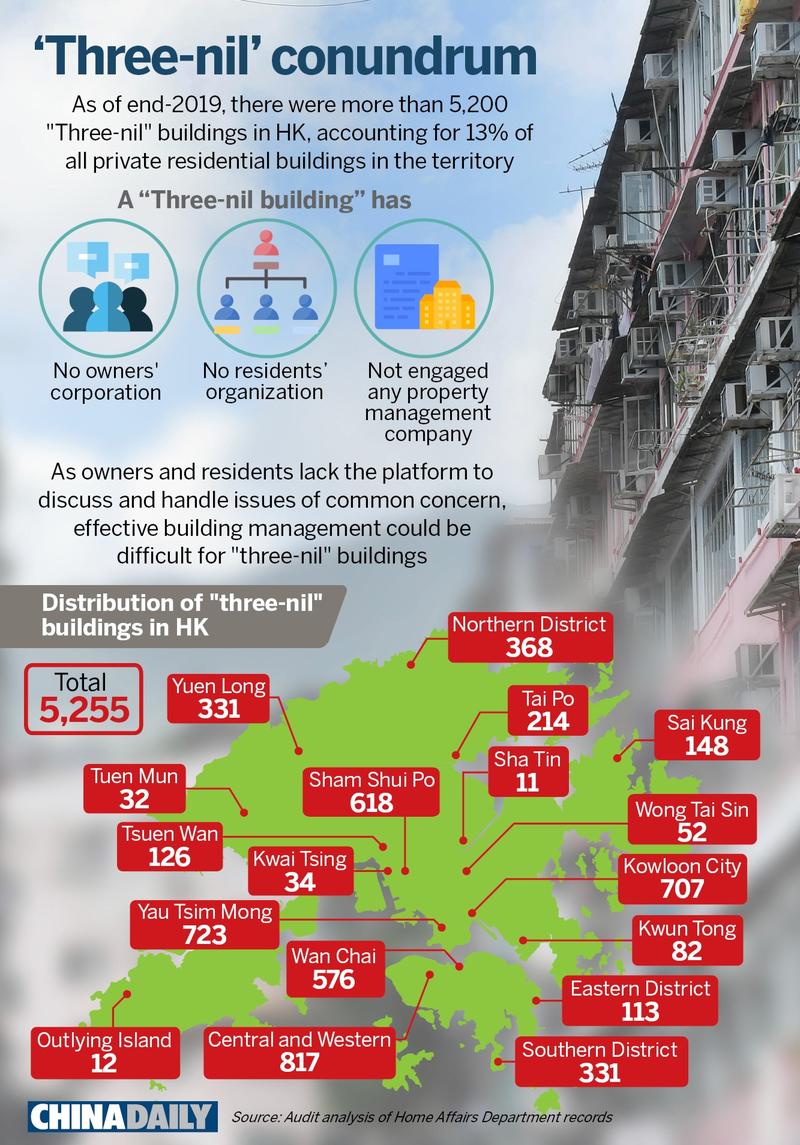
Justin Chow, who recently moved out of his flat in a four-storey building in Kowloon City, said the building lacked extinguishers or other fire safety equipment and that its ventilation was poor.
On a visit to Chow’s former address on Dec 2, the China Daily reporter found the ground floor had been leased to a Thai food restaurant. The building has two residential units per floor and only one staircase. “Worse still, the staircase is clogged with rubbish,” Chow said.
By October 2020, the BD had instigated roughly 2,160 prosecutions against owners who had failed to comply with notices under the Mandatory Building Inspection Scheme (MBIS), a program targeting the maintenance of buildings aged over 30.
As per government records, the building in the Yau Ma Tei fire had not been inspected recently. The last time the owner was issued with an MBIS notice was in September 2018 but had failed to comply.
Lawmaker Wilson Or Chong-shing said it was imperative that the authorities set out a specific timetable for inspection if they were determined to solve the problem. Local media reported that he said that after inspecting buildings aged 60 or older, manpower permitting, officials should move on to relatively newer buildings.
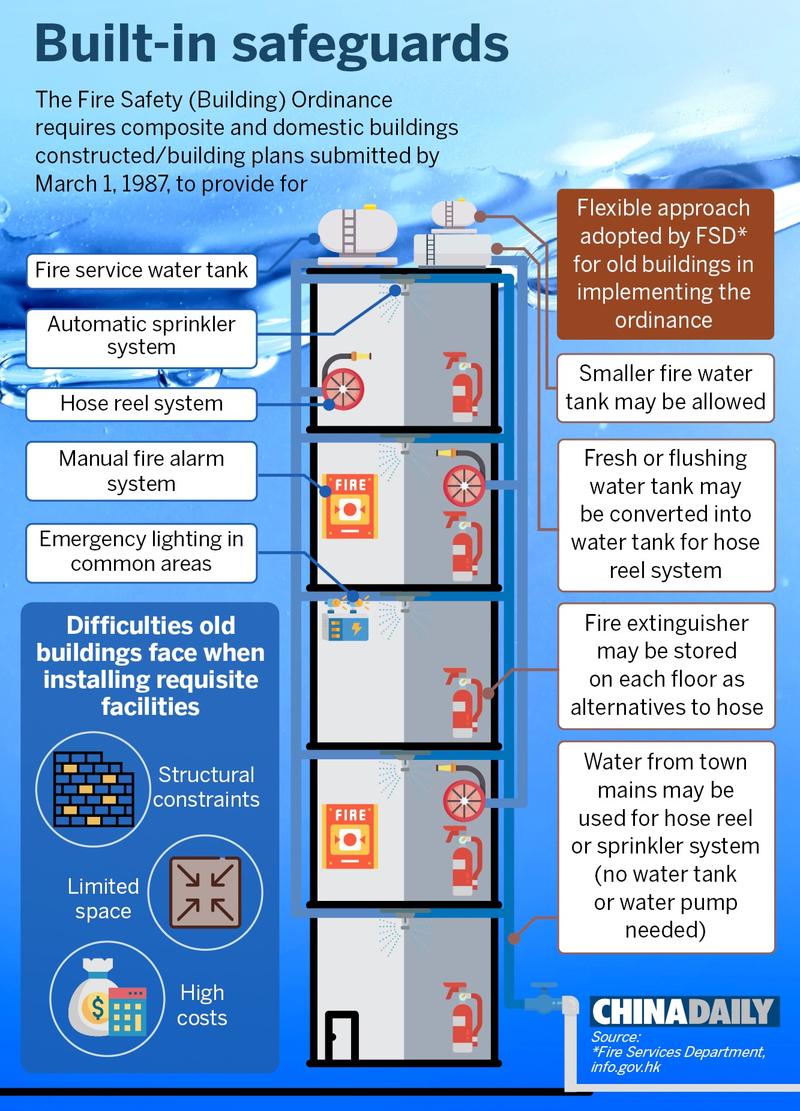
But Vincent Ho Kui-yip, former president of the Hong Kong Institute of Surveyors, said on a radio program that responsibility did not lie with the government alone and that owners who tended to abdicate their responsibilities should be seen as the root of the city’s fire hazard problem.
He said the government could certainly maintain oversight and provide engineering support, or help with the tendering process to make it less daunting for owners to appoint contractors to upgrade fire safety standards in their buildings.
A woman surnamed Yiu said authorities had distributed leaflets in late November on fire safety in her six-storey building in Sai Yin Pun, which has seen residential occupancy since 1964.
An FSD spokesperson said each target building had been assigned an officer to give advice and assistance to owners. For “three-nil buildings”, the department planned to appoint fire safety ambassadors to raise awareness among residents.
The BD said it will work with residents of older buildings in carrying out the necessary inspections and compliance work and to help them apply for financial aid as applicable.
The cost of installing or upgrading fire safety facilities could be very steep in old buildings because of their obsolete architectural structures and is supposed to be shared among owners. But such buildings are more often than not occupied by tenants.
Lawmaker Priscilla Leung Mei-fun said that with many owners having passed away or emigrated, those still in Hong Kong were not willing to pay more than own share of the fire safety upgrade cost. She said the government could take care of the cost first and then recoup it from absentee landlords using legal means.
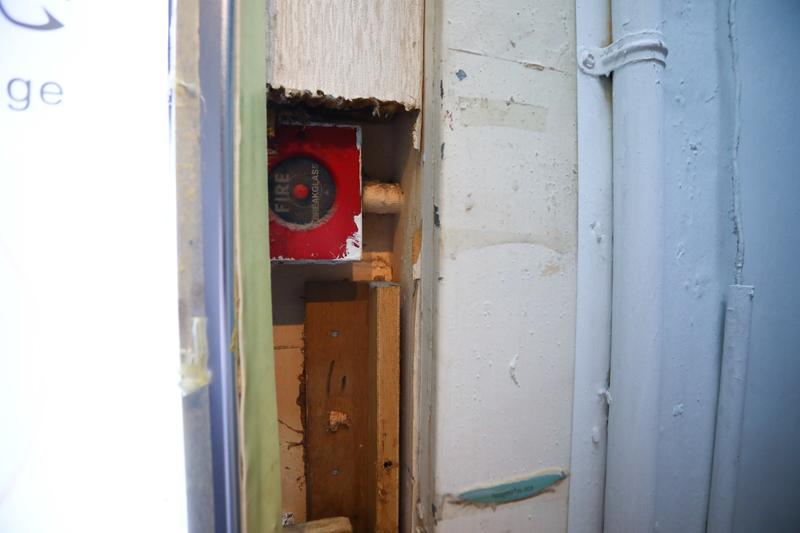 This photo dated Nov 27, 2020 shows a damaged fire alarm inside an old building in Mong Kok, Hong Kong. (CALVIN NG / CHINA DAILY)
This photo dated Nov 27, 2020 shows a damaged fire alarm inside an old building in Mong Kok, Hong Kong. (CALVIN NG / CHINA DAILY)
A spokesperson for the Urban Renewal Authority (URA) said in an emailed reply that the URA has assisted eligible owners in organizing repair works under the MBIS by clubbing the benefits of the government’s Fire Safety Improvement Works Subsidy Scheme launched in 2018. The HK$5.5 billion (US$710 million) subsidy program is expected to benefit between 6,000 and 6,500 buildings.
Other financial subsidy programs such as the Building Safety Loan Scheme and the Building Maintenance Grant Scheme for Needy Owners are also available for owners to carry out maintenance work for common areas of buildings as well as self-occupied units, the spokesperson said.
Contact the writer at jefferygu@chinadailyhk.com


